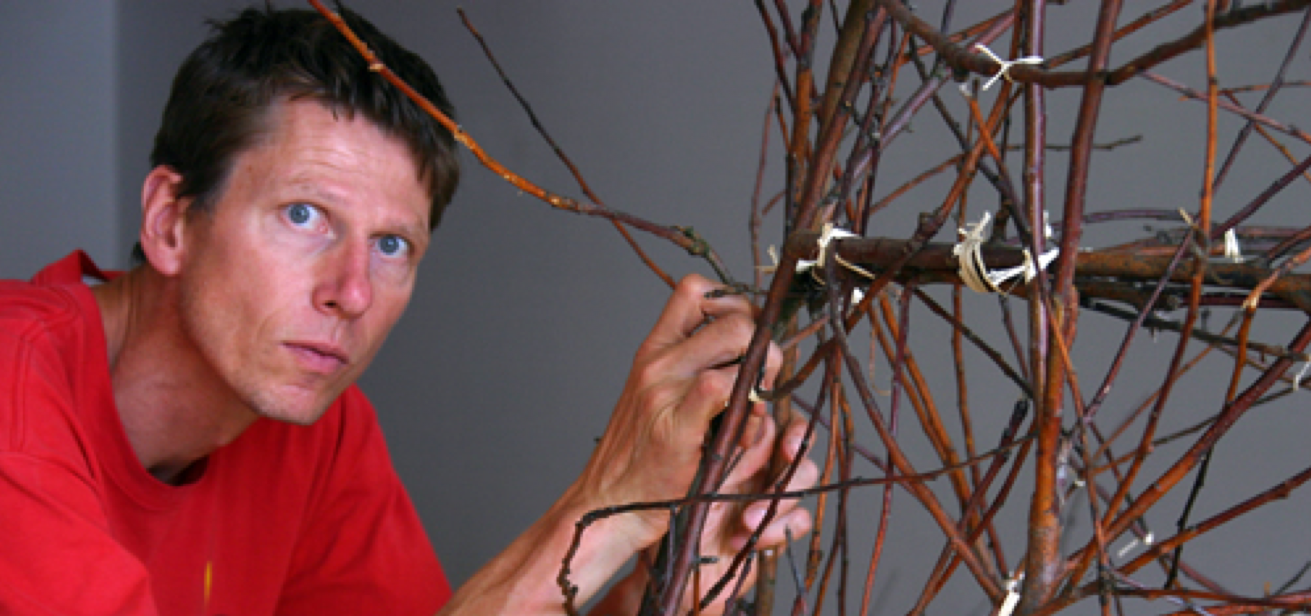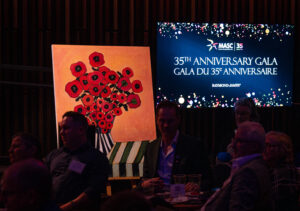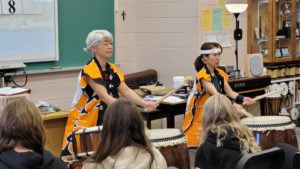Interview: Marc Walter’s land art seeks to remind us that creativity is within each of us
By Jessica Ruano | January 5, 2022

This interview was originally published on Apt613.ca
Marc Walter is an artist who oriented his practice to environmental art (or land art) in 2004. Particularly prolific in his field, he won in 2007 the Grand prix d’excellence de la Fondation pour les arts, les lettres et la culture en Outaouais as well as its 2014 Jury Prize. He has been featured in many Canadian and international land art events. Marc has taken part in over 100 solo and group exhibitions both in galleries and in the context of outdoor nature art events.
In this interview, Marc explores how the landscape influences the creation of works of art, and how those artworks in turn transform the landscape.

Artist Marc Walter. Photo provided by MASC.
Many of your works of art are oriented towards a connection with the environment. How has your relationship to nature and art changed during the pandemic?
My work is as much about the environment as it is about people. By this, I mean that it allows viewers to connect with themselves and with each other, whether through direct physical encounters with the sites or through their impressions left on the works. My practice seems to me especially important during this pandemic, when the psychological discomforts and daily stresses are so acute. Most notably, I have created anonymous mini-artworks and structures in the village where I live and in the area of our home to allow locals to discover new visual elements in their environment and to engage with them. My works aim to awaken the senses and to remind us that creativity is within each of us.
Your work has been featured in galleries, as well as in the context of outdoor art events. How does your approach to creating your art differ knowing the venue at which it will be presented?
Each creation takes into account the site in which it will be experienced. What are its physical characteristics, dimensions, scale, materials present, skylines, or views from windows? What is the social context, the way of arriving and leaving, the conventional use of the place? Everything is taken into account to stimulate the visitors’ emotions and encourage them to live authentically in the moment: the visuals, the existing and added sounds, the smells, the textures to be discovered, and more.

A collaborative art process. Photo provided by MASC.
Why do you think it’s important for our local community to have access to professional artists?
We serve as a model to remind people that professional artists exist in society and that it is an extremely important profession. We remind everyone that creativity is the driving force behind an interesting life and that everyone has this inherent capacity for creativity. My particular practice allows me to develop a link to the community, a pride in the creation of often monumental collective works, and an awareness of a freedom in the expression of this creativity in society. We also offer time for creative reflection and a reminder of artistic possibilities to the teaching staff who sometimes lack the time to realize them.
You offer a school residency through MASC in which you work with students (from kindergarten to grade 12) to create a land art installation. Could you tell us about some of the artworks that have resulted from these residencies?
Here are three recent examples:
Last month, I worked with elementary students to create planets out of branches with mini-paintings and text added. The planets were hung in the school area from trees in some of the students’ yards. In this way, a community link was made between the school, teachers, students, and other community members. A creative presence is added to the environment, with a sense of celebration related to the end-of-the-year season.

One of Marc Walter’s school installations. Photo provided by MASC.
At one of the local high schools, we are creating poles that will serve as markers for a forest of local species planted by students in the spring, which will be part of the international project The Global Forest. Each pole will bear the effigy of an endangered animal and will serve to protect the forest. Painting, recycling, construction, and appropriate intervention in the landscape are the multiple learnings transferred in this project.
This winter, as in previous years, I am conducting snow sculpture workshops. The students will fill moulds with snow, thus creating casts. These will be sculpted in small teams with various tools. The project results in a series of extremely varied sculptures that becomes an outdoor exhibition, a site of creative discoveries, an inspiring place to share. Above all, it is a way to savour winter physically and artistically in a country where this fantastic opportunity to connect with the outdoors is sometimes forgotten in educational institutions.

A wintertime school installation. Photo provided by MASC.
As a member of MASC, what do you gain through offering your workshops in schools and in the community? How has working with students inspired your broader practice?
Making these connections with students and teachers is invigorating. Of course, I share my skills and experience in these workshops, but I also ‘steal’ ideas in passing, stay in touch with my own sense of childhood, and bond with the wonderful creativity of young people. In fact, each workshop becomes a research and application laboratory for my own practice.
Latest News
View All Articles



